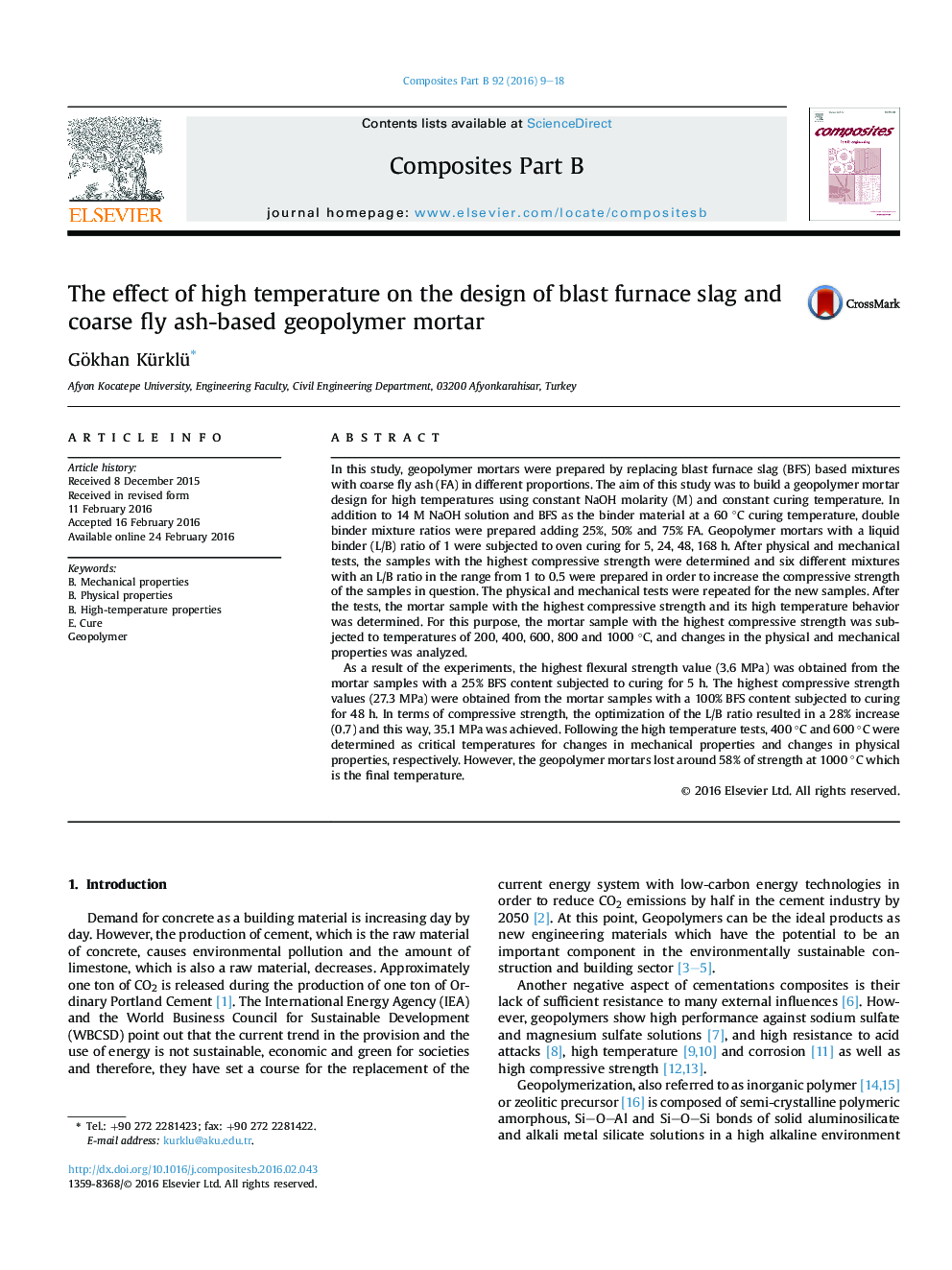| کد مقاله | کد نشریه | سال انتشار | مقاله انگلیسی | نسخه تمام متن |
|---|---|---|---|---|
| 816874 | 1469393 | 2016 | 10 صفحه PDF | دانلود رایگان |
In this study, geopolymer mortars were prepared by replacing blast furnace slag (BFS) based mixtures with coarse fly ash (FA) in different proportions. The aim of this study was to build a geopolymer mortar design for high temperatures using constant NaOH molarity (M) and constant curing temperature. In addition to 14 M NaOH solution and BFS as the binder material at a 60 °C curing temperature, double binder mixture ratios were prepared adding 25%, 50% and 75% FA. Geopolymer mortars with a liquid binder (L/B) ratio of 1 were subjected to oven curing for 5, 24, 48, 168 h. After physical and mechanical tests, the samples with the highest compressive strength were determined and six different mixtures with an L/B ratio in the range from 1 to 0.5 were prepared in order to increase the compressive strength of the samples in question. The physical and mechanical tests were repeated for the new samples. After the tests, the mortar sample with the highest compressive strength and its high temperature behavior was determined. For this purpose, the mortar sample with the highest compressive strength was subjected to temperatures of 200, 400, 600, 800 and 1000 °C, and changes in the physical and mechanical properties was analyzed.As a result of the experiments, the highest flexural strength value (3.6 MPa) was obtained from the mortar samples with a 25% BFS content subjected to curing for 5 h. The highest compressive strength values (27.3 MPa) were obtained from the mortar samples with a 100% BFS content subjected to curing for 48 h. In terms of compressive strength, the optimization of the L/B ratio resulted in a 28% increase (0.7) and this way, 35.1 MPa was achieved. Following the high temperature tests, 400 °C and 600 °C were determined as critical temperatures for changes in mechanical properties and changes in physical properties, respectively. However, the geopolymer mortars lost around 58% of strength at 1000 °C which is the final temperature.
Journal: Composites Part B: Engineering - Volume 92, 1 May 2016, Pages 9–18
